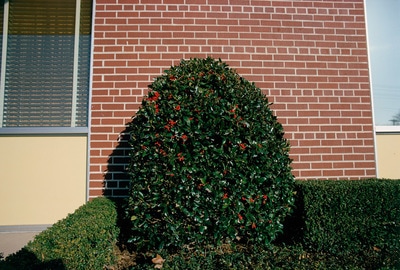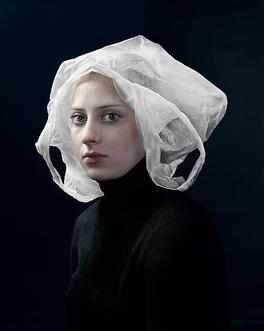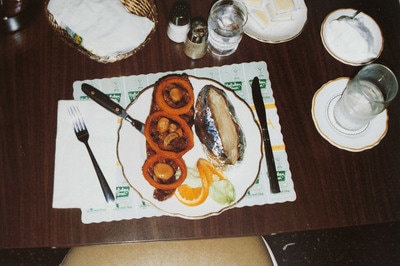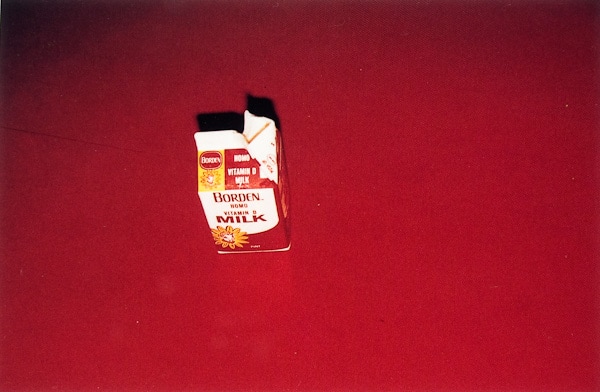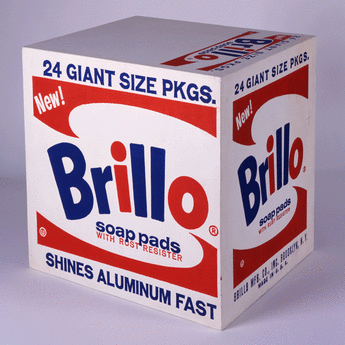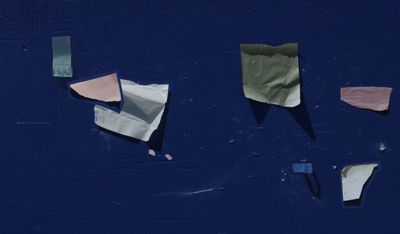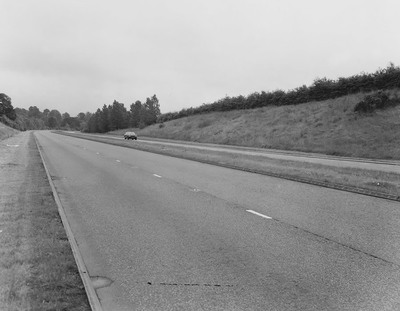Post 16 Lesson Plan:
By Chris Francis, St Peter's School
This is a lesson about photographing boring things. Boring, potentially, in the eyes of new photography students, who might be more enticed by skate parks and sunsets, or sports cars, or kittens...
Not that there is anything wrong with those themes. Students can, of course, photograph what they want, and even the most revisited of subjects holds potential for new interpretations. But photography does offer remarkable rewards for tuning into a less exotic, more humdrum frequency. Boring things - routine items, daily detritus, the plainly practical wares of life and even boredom itself - are remarkably interesting, when you come to think of it. Honestly. Bear with me; this lesson holds noble ambitions:
- To encourage students to think carefully about why (and how) photographers often turn their lenses to the seemingly insignificant, the mundane and the plain dull.
- To develop a deeper understanding of the potential for photography as a means to investigate, elevate, abstract and experiment.
Introductory Activity
Rich themes can emerge from the seemingly insipid (something I’ve argued before with students) and what follows is a practical introduction to this, an attempt to focus student grey matter on everyday subject matter.
As a starting point a collection of bland resources is required. Choose ‘neutral forms’, items that lack any impressive identity: Plain sheets of A4 paper, plain plastic bags, small blocks of wood, simple cardboard shapes, tin cans (no labels), small cardboard boxes or tubes, household bricks etc.
How students first encounter these objects is relevant though. This can provide a useful starting point for reflection...
|
Consider the difference between simply presenting the objects as hastily collected resources on a table; to being laid out in a more considered way - for example, carefully lit within a studio set-up; a single item presented on a plinth; a thoughtfully composed collection, cordoned off in the centre of the room.
Putting photography aside for a moment, discuss why our attention might be drawn to some things rather than others: What makes something insignificant suddenly catch our eye? How do everyday items adopt new significance or gain visual interest? How can a mundane object develop in poignancy? Consider the following:
|
Of course just simply taking a photograph of something is one means of drawing attention to it - processes of selecting, arranging, framing, sharing and so on all have the potential to add value or purpose. But this doesn’t necessarily scratch the surface of the possibilities of photography, and helping students to develop and to articulate a deeper understanding of this is our next aim.
Boring object(ions)?
Below are a selection of photographs with links that may add a little context to proceedings. I've tried to pick a few photos that at first glance, without context, might provoke accusations from students of being 'boring'. It can be an interesting starting point for a baseline discussion - to simply project them up with a throw-away line: "here's some (interesting, important, exciting, significant...?) photos", and see if anyone objects. The links can be revisited at a later stage.
Practical Activity
1. Provide the four keywords below as a starting point:
2. Try to avoid explanations of each term (students can always look up meanings for themselves).
3. Challenge students to produce photographic responses to each of the keywords using the dull items provided. Importantly, students should try to use the same object (or multiples of the same item, renewing as required) for all of the keywords. This will encourage a focus on the differing prompts rather than simply the objects.
Remind students to experiment freely, without fear of failure. But also to think carefully - to draw on the expertise and knowledge that they have to date.
Depending on the time available this activity might run over a couple of lessons or be extended as a homework task.
4. Once completed, invite students to share and explain their responses. Listen carefully to the vocabulary used and identify commonly occurring words. Note which students cope better with the open-ended nature of the task compared to those intent on producing a seemingly ‘correct’ answer.
Below are four initial responses from Seb, an able Year 12 student: Flatten, Survey, Play, Elevate. He chose to use plain white blocks and offset these against black for maximum contrast and no distractions. His response to 'Flatten' was particularly interesting, employing a photograph upon his phone within the photograph.
- FLATTEN
- SURVEY
- PLAY
- ELEVATE
2. Try to avoid explanations of each term (students can always look up meanings for themselves).
3. Challenge students to produce photographic responses to each of the keywords using the dull items provided. Importantly, students should try to use the same object (or multiples of the same item, renewing as required) for all of the keywords. This will encourage a focus on the differing prompts rather than simply the objects.
Remind students to experiment freely, without fear of failure. But also to think carefully - to draw on the expertise and knowledge that they have to date.
Depending on the time available this activity might run over a couple of lessons or be extended as a homework task.
4. Once completed, invite students to share and explain their responses. Listen carefully to the vocabulary used and identify commonly occurring words. Note which students cope better with the open-ended nature of the task compared to those intent on producing a seemingly ‘correct’ answer.
- What prior knowledge can/do students draw upon to make sense of the task? What difficulties were encountered?
- Do students respond to the key words in superficial ways? Are they interpreted as thematic titles or photographic verbs/actions?
Below are four initial responses from Seb, an able Year 12 student: Flatten, Survey, Play, Elevate. He chose to use plain white blocks and offset these against black for maximum contrast and no distractions. His response to 'Flatten' was particularly interesting, employing a photograph upon his phone within the photograph.
Following this introductory activity, use the resources below to share various approaches to the photographing of everyday objects and encounters. Important to note: these keywords and groupings of artists are not formal or definitive categories. Photography has many genres, yet photographs are not fixed in meaning; context is everything.
FLATTEN
Additional Vocabulary: Abstracted, compressed, composed, arranged, ordered, organised, geometric, surface, depth of field (DOF)
Big questions:
Additional Vocabulary: Abstracted, compressed, composed, arranged, ordered, organised, geometric, surface, depth of field (DOF)
Big questions:
- Are all photographs ‘flat’? Is it possible for some photographs to appear flatter than others? Is it possible to eliminate distance in a photograph?
- Do you ever really look at the surface of a photograph?
- Can a photograph flatten its subject matter and surroundings equally?
- Does a subject sit on the surface of the photograph?
- Can a boring subject (such as an everyday object) become more interesting through being flattened, abstracted or imaginatively framed?
- What influence does lighting have on these considerations?
Flatten: On the surface, boring down
Photographs are flat, or at least they are when physically printed or displayed on a flat screen. (But of course this can be argued against too: a photograph can be folded; an image can be projected onto a 3 dimensional form, and so on). Consequently, any photograph taken - of whatever - involves flattening: foreground, middleground and background come together on a level playing field. As TC#5 reminds us, all photographs are abstractions shaped by technology.
Below are 2 examples that in different ways, beyond their seemingly everyday subject matter, may provoke deeper reflections on the 'flatness' of photographs.
Below are 2 examples that in different ways, beyond their seemingly everyday subject matter, may provoke deeper reflections on the 'flatness' of photographs.
... people do leave traces in their wake: the refuse and detritus of history; the variegated remnants of daily life; or dust. A trace is ephemeral, a locus of ambivalence suspended in the unstable space between construction and dispersal, presence and absence. A trace is very little, almost nothing. But it is also an index of life [...] Gabriel Orozco’s artistic practice could be described, I think, as an aesthetic of the trace. |
Gabriel Orozco's Breath on Piano, 1993 (above) shows the trace of a breath, a fleeting recording of presence (or absence), captured upon a surface. Might all photographs be described in this way? Imagine this trace of breath was not upon the piano but upon a glass frame that contained the photograph of the piano. Would this momentary breath-print (breathograph?) look different? Would it appear any flatter? When we view photographs they become akin to a screen, a barrier before us, and yet we tend to look through and beyond this. Orozco's breath (presuming it is his) reminds us of the artist's presence. But equally it could be our own, evidence of an encounter with a flat surface.
I am interested in the layer of distortion and misapprehension introduced by the camera as it translates three dimensional form and space into two dimensional image. This inevitable and often fruitful misalignment is the central issue in my work. Erin O'Keefe is a photographer and an architect. Her work, informed by both of these disciplines, questions the nature of spatial perception. Her series 'Flatness' consists of geometric, and at times quite illusionary, abstractions.
|
- How might you use photography to experiment with the ways in which we see?
- How might you use photography to combine viewpoints, to compress, to distort and to abstract?
Below are 3 examples of artists that might add historical context to these big ideas. But hang on, boring subject matter, again? Arguably not. Perhaps the subject matter is secondary (as well as possibly being to hand when inspiration strikes, cheap to use etc.). If the artist was more concerned with concept or technique perhaps a more exotic subject matter might have become a distraction, for artist or viewer. By using everyday matter, things familiar to us all, it does emphasise a new way of looking; new attention is drawn to what we might take for granted. Follow the links below to find out more.
I will astonish Paris with an apple
-- Cézanne
SURVEY:
Additional Vocabulary: Investigate, study, classify, typology, objectivity, compare, collate, order (and chance)…
Big questions:
Additional Vocabulary: Investigate, study, classify, typology, objectivity, compare, collate, order (and chance)…
Big questions:
- How might a camera be used to investigate and understand a subject in more depth?
- How might an artist’s use of photography differ to someone else, for example that of a scientist, or a cartographer, or an ethnologist?
- How have artists/photographers been influenced by other genres of photography?
- Is a photograph a reliable form of evidence?
- How might photography be used to investigate, compare, order or categorise a subject?
- What are the benefits of setting rules or constraints to work within?
Survey: Boring truths?
Photography consists of many genres (TC#1). It is a hybrid form of art that crosses many different disciplines (TC#2). As a result the boundaries and relationships between Art, Photography and Science are often tangled and blurred, and issues of objectivity and subjectivity can usually be found at the heart of this.
Below are 2 examples that in different ways, beyond their seemingly everyday subject matter, might provoke deeper reflections on photography as a means to survey, to investigate and to bring order to our chaotic world.
Below are 2 examples that in different ways, beyond their seemingly everyday subject matter, might provoke deeper reflections on photography as a means to survey, to investigate and to bring order to our chaotic world.
Stare. It is the way to educate your eye, and more. Stare, pry, listen, eavesdrop. Die knowing something. You are not here long.
-- Walker Evans
Walker Evans' Beauties of the Common Tool (1955) were produced as a photo essay for Fortune magazine. These images celebrate the material qualities and forms of classic hand-tools. The photographs are taken objectively, as if it is a scientific study. They are reminiscent of illustrations for Diderot’s Encyclopedia. Their presentation in a grid format here is relevant too: These might be considered a typology, a comparative study of various types (in this case, tools).
The camera's ability to make an accurate record of particular visual phenomena has meant that artists and photographers, seeking to make a systematic document of aspects of the world, have been repeatedly drawn to photography. In their hands, the camera has been used as a tool for witnessing and classifying types of subjects - people, buildings, objects etc. - gathering this evidence together in one place (often a book or exhibition) so that the viewer is able to see and assess it.
-- Typologies, PhotoPedagogy Lesson Resource
- Do Walker Evans' photographs encourage us to look at these everyday tools in a more attentive way?
- Do we pay more attention to their material forms? Do they become more sculptural?
- Could Walker Evans' attention to everyday items - which at first glance might seem far from radical - be compared to a 'Readymade'? For example Marcel Duchamp's Fountain, widely considered as a highly influential precursor to Conceptual Art.
Choosing the object is itself a creative act, cancelling out the useful function of the object makes it art, and its presentation in the gallery gives it a new meaning. This move from artist-as-maker to artist-as-chooser is often seen as the beginning of the movement to conceptual art, as the status of the artist and the object are called into question. At the time, the readymade was seen as an assault on the conventional understanding not only of the status of art but its very nature - is this art? what is art? -- Tate, online resources |
Stephen Gill is a contemporary photographer who uses his camera to investigate his environment, often in imaginative ways, most notably in his home district of Hackney, East London. His book A Series of Disappointments is a collection of folded and discarded betting slips gathered and photographed against a plain grey background. The title of each photo is taken from the betting details found after performing unfolding “autopsies” - these include the race time, a name or trap number, and the money at stake. For example the first image on the left is titled 12.27 Trap 2 £50 to win. These accompanying details become additional categories within the work. The forms themselves might be considered as involuntary sculptures, most likely to have been manipulated as races were lost; individual expressions of fading hopes.
Below are a couple of further examples that demonstrate the use of photography as a tool to survey, compare and classify. These examples have been chosen (as you might now predict) for the mundane nature of the subject matter, which, when exposed to photographic investigation adopts new interest.
PLAY
Additional Vocabulary: Experiment, challenge, discover, disrupt, surprise, humour, collaborate, absurdity, unconventional, chance (and order)
Big questions:
Should an artist break rules and abuse traditions?
How much fun or adventure can you generate through photographing a boring object? (This is as much a challenge as a question). How would you go about this?
How much ‘fun’ is photography? (And what makes something fun anyway?)
How have artists used humour to defy conventions, or to surprise, to shock, or to express opinions?
How does a child explore something new, and can artists learn from this?
How might everyday items be utilised to provoke deeper experiences, for artist or viewer?
Additional Vocabulary: Experiment, challenge, discover, disrupt, surprise, humour, collaborate, absurdity, unconventional, chance (and order)
Big questions:
Should an artist break rules and abuse traditions?
How much fun or adventure can you generate through photographing a boring object? (This is as much a challenge as a question). How would you go about this?
How much ‘fun’ is photography? (And what makes something fun anyway?)
How have artists used humour to defy conventions, or to surprise, to shock, or to express opinions?
How does a child explore something new, and can artists learn from this?
How might everyday items be utilised to provoke deeper experiences, for artist or viewer?
Play: Antidote to boredom
Photography, like life, is a complicated business. For all children, and artists too, 'play' is an essential part of learning, not least providing opportunities for practice, collaboration, discovery, developing imaginations, and so much more.
The examples below show artist photographers that play with our expectations of mundane items. But more so, they demonstrate how interesting consequences can emerge through acts of playful experimenting.
The examples below show artist photographers that play with our expectations of mundane items. But more so, they demonstrate how interesting consequences can emerge through acts of playful experimenting.
|
Hendrik Kerstens' work plays with the intersections between painting and photography. Using his daughter Paula, he photographs her with reference to Old Master Dutch painting, but also in relation to her own life and the world we live in today. Kerstens' work, however, is not just imitating painting. His photographs are masterful prints with an extraordinary combination of light and skin tone. He is interested in combining the art of photographic portraiture with a conceptual, humorous dialog between past and present.
|
Peter Fischli and David Weiss are two Swiss artists who, since the late 1970s, have captivated and amused audiences with their extraordinary transformations of the commonplace. Fischli and Weiss work across a wide range of media including sculpture, installation, moving image and photography. Underlying all of their work is a childlike spirit of discovery and play.
The photographs which make up the series Equilibres/Quiet Afternoon 1984 show precariously balanced sculptures at what appears to be the exact moment before their collapse. Everyday items such as vegetables, kitchen utensils, tyres, chairs, and tools, are piled in elaborate configurations that – for an instant, at least – appear stable. ‘We discovered that we could leave all formal decisions to equilibrium itself’, Fischli has said of these sculptures. ‘There was apparently no way to do it ‘better’ or ‘worse’, just ‘correctly’.’ from Tate resources
|
Boredom is just the reverse side of fascination: both depend on being outside rather than inside a situation, and one leads to the other |
Below are some further examples that demonstrate the use of photography as a means for play, collaboration, and for toying with the unexpected. As with the examples above, everyday items provide opportunities for playful works and poignant and investigations. This PhotoPedagogy lesson, Serious Play, is also highly recommended reading.
ELEVATE
Additional Vocabulary: Enhance, exalt, heighten, draw attention to, signify, isolate, represent, poetic, temporal, terrestrial
Big questions:
Consider how everyday items from history are often found in museums. What role does time play in making seemingly mundane objects interesting?
Is it important to record our everyday experiences?
Can photography help us to find beauty in the everyday?
When does a photograph of an object become more interesting than the object itself?
How might repeating an action – as an act of obsession, persistence, dedication – elevate the value of that action?
Additional Vocabulary: Enhance, exalt, heighten, draw attention to, signify, isolate, represent, poetic, temporal, terrestrial
Big questions:
Consider how everyday items from history are often found in museums. What role does time play in making seemingly mundane objects interesting?
Is it important to record our everyday experiences?
Can photography help us to find beauty in the everyday?
When does a photograph of an object become more interesting than the object itself?
How might repeating an action – as an act of obsession, persistence, dedication – elevate the value of that action?
Elevate: Hold up, Boring things!
Photographers have the potential to elicit beauty, be it through lighting techniques, subtle composing or trickeries of pre or post production. But this is not big news: we've all pleaded "make me look nice" when confronted with a camera, right? But still, below are a few examples - using less exotic items than pouting models - to emphasise this point.
The photographers above may have had differing intentions, but in each case everyday subject matter takes on new appeal. Weston's 'Pepper' is abstracted into modernist sculpture; Renger-Patzsch's 'Glasses' and their shadows become equal in their worldly beauty, Arnatt's 'Rubbish Tip' conjures a sweeping Turner-esque seascape; Newark's 'Protoplasm' plastic bags float in the canal as night-sky constellations. Analogies abound to make sense of beauty discovered in the everyday.
I see no reason for recording the obvious.
-- Edward Weston
But perhaps for new photography students a harder challenge is to unravel a more obvious, seemingly realist approach to the banal. Arguably, it is one so ingrained in their own visual culture - from its influence on films, television shows, advertising and Instagram feeds - that it's almost too close to fully comprehend.
William Eggleston and Stephen Shore are American photographers who, in each following their own distinct paths, came to prominence in the 1970s. Both embraced colour photography at a time when it was held in low regard as a serious medium, both have employed a style commonly referred to as 'snapshot aesthetic' (although Eggleston, typically, objected to this). Parallels between Eggleston's work and Shore's - with particular reference to 'American Surfaces', the results of a series of trips Shore took between 1972 and 1974 - include an incredible intensity of colour, often with the use of flash; and a seemingly spontaneous, reflex response to subject matter - a democratic selection process with all views treated equally.
To see something spectacular and recognise it as a photographic possibility is not making a very big leap. But to see something ordinary, something you’d see every day, and recognise it as a photographic possibility – that’s what I’m interested in. I wanted to make pictures that felt natural, that felt like seeing, that didn’t feel like taking something in the world and making a piece of art out of it. I didn’t think about beauty a lot. |
|
Stephen Shore was a teenager who was not short of confidence and - to the great benefit of his creative development - he reached out to established photographers and artists for opportunities. Significantly, at 17 years of age, Shore was regularly hanging out with Pop Artist Andy Warhol at the now-legendary Factory.
Pop Art was an art movement that drew inspiration from everyday commercial culture, using impersonal, mundane imagery in a graphic, representational way. Warhol's fascination with colour, industrial processes, and the serial reproduction of images had a strong influence on Shore. He began to see new possibilities for his photography, even though color, at that time, was a commercial process meant for advertising and other non-art purposes. I saw these decisions happening over and over again. It awakened my sense of aesthetic thought. |
|
In contrast to Stephen Shore, William Eggleston's development as a photographer took place in relative isolation from other artists. Key turning points for Eggleston were the discovery of Henri Cartier Bresson's book, 'The Decisive Moment', alongside being introduced to colour film by William Christenberry. These encounters formed the foundation for an obsessive commitment to documenting life, democratically, and always on his own terms.
These extraordinary, compelling, honest, beautiful and unsparing photographs all have to do with the quality of our lives in the ongoing world: they succeed in showing us the grain of the present, like the cross-section of a tree. |
I am afraid that there are more people than I can imagine who can go no further than appreciating a picture that is a rectangle with an object in the middle of it, which they can identify. They don’t care what is around the object as long as nothing interferes with the object itself, right in the centre. [...] They want something obvious. The blindness is apparent when someone lets slip the word ‘snapshot’. Ignorance can always be covered by ‘snapshot’. The word has never had any meaning. I am at war with the obvious.
-- William Eggleston, 1988
Below are some further examples that demonstrate the use of photography as a means of elevating the seemingly mundane and everyday. These also link to PhotoPedagogy resources that are highly recommended
And if you're not bored yet...
Okay, boring, boring. Perhaps this lesson has gone on a bit. But wait! There's still so much to explore. Be it built on an interest for documentary or typologies, or laced with a dash of post-modern irony (time will tell, let the sheer excitement settle): here's a last hurrah for boring. But this time - beyond those dull objects - here's landscapes and people. Pah! Boring indeed. (Follow the links to find out more).










